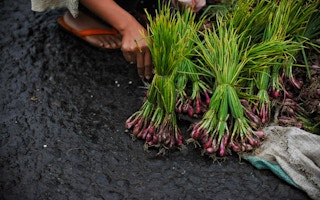As weather patterns become increasingly volatile, companies with supply chain links into the agriculture sector are becoming vulnerable to disaster.
In Malaysia, the production of vegetables in the country saw a drop between 15 and 20 per cent due to the hot weather caused by El Niño this year. Even seasonal fruit crops were not spared - the local Harumanis mangoes usually exported to Japan and Singapore saw a 60 per cent dropwhile the king of fruits, durians, also saw a drop between 40 and 50 per cent.
According to the National Antarctica Research Center, this year’s El Niño phenomenon is as bad as it was in the year 1997 based on the low rainfall across the country. The combination of high temperatures and lack of rainfall is not only causing these farmers a decrease in their harvest and price rise due to the short supply of their product, but causing their crops to dry up and die.
While many in Malaysia welcome the rain to dispel the hot weather – too much of a good thing can prove to be a bane. We are getting clear indications that the hot spell caused by the El Niño phenomenon is withering away as we are seeing rainy days and spates of flash floods in the country.
It is worth noting that La Niña often takes place after El Niño ends. States likely to bear the brunt of the La Niña effects are the East Coast states in Peninsular Malaysia as well as Borneo, as La Niña is bound to occur with a 75 per cent certainty based on a report by the US National Oceanic Atmospheric Administration Climate Prediction Centre (CPC).
“
Surely with the current circumstances, businesses can now see a strong economic case for disaster proofing across its production and supply chain.
John Smith
Businesses in Malaysia are clearly not prepared to face El Niño or La Niña and lack the expertise to face such phenomena. But surely with the current circumstances, businesses can now see a strong economic case for disaster proofing across its production and supply chain. Perhaps, we can learn from some of these regional companies:
Go into partnership to develop a Disaster and Emergency Warning Network (DEWN). Axiata’s Sri Lanka operations, Dialog, went into partnership with Microimage, a software company, and the Dialog-University of Moratuwa Mobile Communications Research Laboratory to pioneer DEWN. DEWN provides early warning of impending disasters to communities in disaster-prone areas using GSM networks.
Messages transmitted in Sinhala, Tamil and English have enabled groups such as ‘tea pluckers’ and fishermen to be aware of potential threats and to take relevant precautions.
Embedding strategy and systems on disaster into the business core. Aeon has taken proactive measures to deal with the effects of global warming, noting the increase of heavy rain in Japan. To respond to such risks, Aeon have devised rules and procedural manuals to respond to large-scale natural disasters and major incidents and accidents. This retail company is currently implementing education and training among its employees to ensure swift and precise responses.
Aeon’s embeds its ‘Protection Strategy’ focusing on disaster prevention, also setting a target to make 100 of its stores across Japan as disaster-prevention facilities to serve as base of relief and rescue i.e. act as a local temporary shelter and to open a food department using its wide retail network and supplies in the event of a disaster.
Maintains database to allow close monitoring and responding to disasters. Although Toyota is not involved in the agricultural sector, we can learn from how this car manufacturer recovered from the tsunami that struck Japan more than five years. Toyota, with the cooperation of its suppliers, now maintains a database that allows Toyota to figure out which suppliers are affected in the affected areas, allowing quicker mobilisation assistance.
Clearly, disaster risk is a tangible one and businesses in Malaysia will need to be quick to sync or sink.
Esther Teh is a project manager at Helikonia. This post is republished from the CSR Asia blog with permission.


















